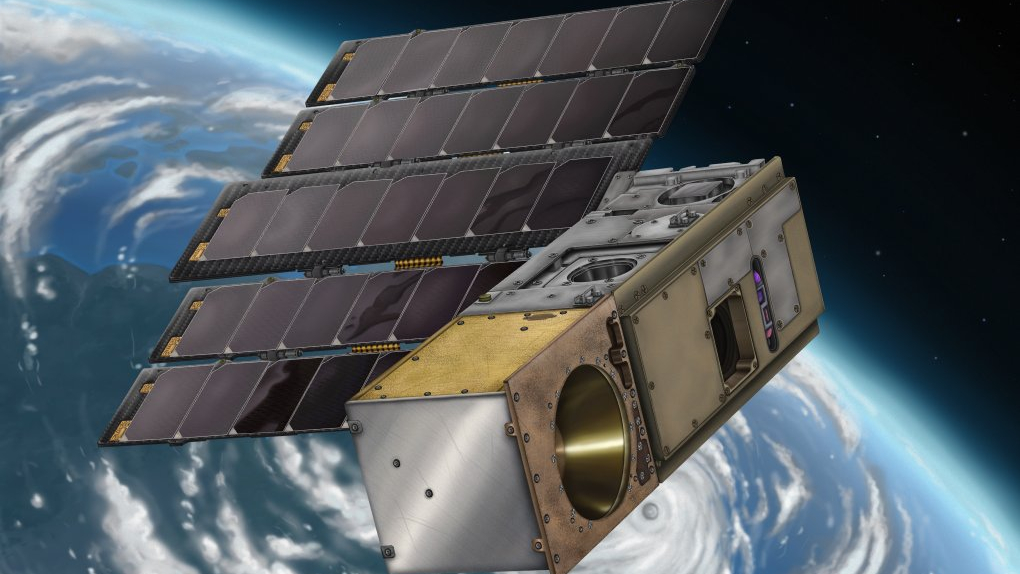Watch Rocket Lab launch 2 NASA storm-watching satellites tonight
The company will launch a second tranche of satellites at a later date.
Update for 9:55 pm ET: Rocket Lab has successfully launched two NASA TROPICS satellites into orbit to study Earth's tropical storms and hurricanes. See launch video and read our full wrap story.
Rocket Lab will launch the first set of NASA storm-watching satellites Sunday (May 7), and you can watch the whole thing live.
Two satellites of the NASA TROPICS constellation (Time-Resolved Observations of Precipitation Structure and Storm Intensity with a Constellation of Small Sats) will launch from Mahai, New Zealand no earlier than 9 p.m. EDT (0100 GMT Monday, May 8). Coverage of the launch will stream live here at Space.com courtesy of NASA TV, beginning at 8:30 p.m. EDT (0030 GMT on May 8).
The mission, called "Rocket Like a Hurricane," is the first of two expected Rocket Lab missions that will bear TROPICS satellites aloft. The next, dubbed "Coming to A Storm Near You," is expected to follow within weeks, contingent on a successful first launch.
Related: Rocket Lab to launch 2 missions for NASA hurricane-watching constellation
The first tranche of TROPICS satellites was supposed to launch on June 12, 2022, but the cubesats were lost during a failure of Astra's Rocket 3.3 booster. (Astra subsequently canceled the entire Rocket 3 line amid several failures, and is making numerous design changes for a new generation, called Rocket 4.)
NASA then turned to 13 preapproved suppliers to swiftly relaunch TROPICS, citing "urgent" hurricane-tracking needs, in October 2022. Rocket Lab was selected in November, promising to deliver the four cubesats to two low-Earth orbital planes within 60 days. Later on, Rocket Lab elected to send the satellites aloft from New Zealand at an even earlier launch date than the initial planned launching site in Virginia, to get ahead of the northern hemisphere's 2023 storm season.
Get the Space.com Newsletter
Breaking space news, the latest updates on rocket launches, skywatching events and more!
Rocket Lab officials called the TROPICS launches "particularly special" on Twitter Wednesday (April 26), citing Cyclone Gabrielle's devastating effects in New Zealand earlier this year. "It's a privilege to be launching satellites tasked with monitoring tropical storms and providing actionable data to those in storm paths," the statement added.

Electron, a 59-foot (18-meter) tall rocket, can send about 660 pounds (300 kilograms) of payload to low Earth orbit. Powering the launch are nine 3D-printed Rutherford engines in its first stage and on the second stage; an upper "kick stage" then sends the satellites to their assigned orbits.
Rocket Lab has sent more than 30 orbital missions aloft, using expendable Electrons. But the company has recovered Electron boosters from six different orbital launches and hardware tests suggest reusability may be an option. The company also plans to launch a used Rutherford engine in the third quarter of 2023.
Initially Rocket Lab attempted to catch falling booster with helicopters, but following the hardware analyses, the Electron first stages appeared to perform well after being dunked in the ocean. So now the company is focusing on water recoveries "as the primary method of recovering Electron for re-flight," Rocket Lab officials wrote in March.
Rocket Lab does not plan to recover the Electrons for either TROPICS launch, however, the company wrote in a mission description.
Elizabeth Howell is the co-author of "Why Am I Taller?" (ECW Press, 2022; with Canadian astronaut Dave Williams), a book about space medicine. Follow her on Twitter @howellspace. Follow us on Twitter @Spacedotcom or Facebook.
Join our Space Forums to keep talking space on the latest missions, night sky and more! And if you have a news tip, correction or comment, let us know at: community@space.com.

Elizabeth Howell (she/her), Ph.D., was a staff writer in the spaceflight channel between 2022 and 2024 specializing in Canadian space news. She was contributing writer for Space.com for 10 years from 2012 to 2024. Elizabeth's reporting includes multiple exclusives with the White House, leading world coverage about a lost-and-found space tomato on the International Space Station, witnessing five human spaceflight launches on two continents, flying parabolic, working inside a spacesuit, and participating in a simulated Mars mission. Her latest book, "Why Am I Taller?" (ECW Press, 2022) is co-written with astronaut Dave Williams.









